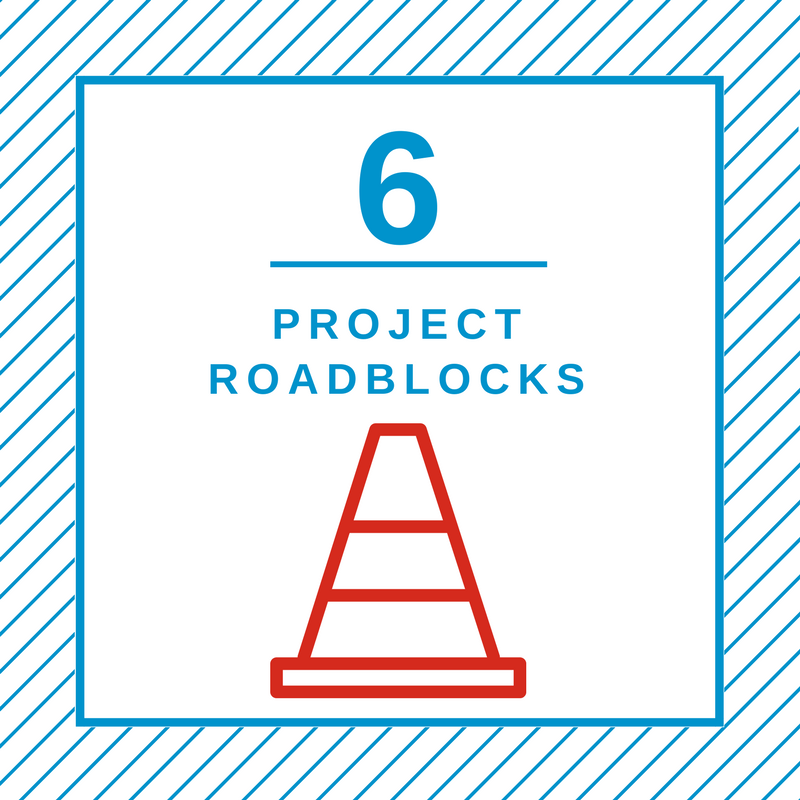If you have ever downloaded any tools or other resources on our site, you know that we usually ask you about your Biggest Business Challenge in our forms. In response to your feedback, we are featuring a  blog series on your biggest business challenges! This post is a response to the challenge “Keeping projects on schedule."
blog series on your biggest business challenges! This post is a response to the challenge “Keeping projects on schedule."
Working on projects, especially ones that are dependent on cross-functional teams to get done on time, can be a real challenge for many organizations. Many companies have a “project graveyard” or a list of things that were started and never completely got off the ground. Worse, some companies miss important delivery deadlines on products or services that end up costing the company significantly. Often, we have a great plan for our project at the beginning of the quarter, but when it gets down to the day-to-day execution, things can fall apart.
Here are a few of the typical roadblocks to accomplishing your project as planned:
- You are counting on resources from another department (x hours of IT or x hours of graphic design) to get to the next stage in your project. But, they are swamped with their own projects or are too busy prioritizing projects for other departments.
- You realize that you don’t have the internal expertise that you need to move the project along. Maybe you made assumptions about who could do what on your team without checking first to be sure they had the capability and bandwidth to deliver.
- Another big project comes along mid-quarter that is more exciting or seems more important and takes focus away from completing the original project.
- You overloaded your priorities for the quarter so that you have too many projects and just not enough time in the day to focus on completing any of them.
- If your projects are customer deliverables, maybe your sales team is having its best quarter ever, but the service or product side just doesn’t have the ability to deliver as quickly as sales can sell.
- You think you have plenty of time left to get the project done, so you don’t prioritize it until right before the deadline - and, by then, it is too late!
Following our recommended Plan Rhythm process can eliminate some of the stress of achieving your goals on projects from the start. The right rhythm of quarterly execution planning and cascading that plan rhythm into your departments can help you keep focused on the main thing to achieve in the quarter and the top 3-5 priorities for the company and for you as an individual so that you aren’t overloaded. One key piece of aligning everyone around the quarterly plan is getting back together after all of the departmental plans are complete and sharing as a company; this will help you identify early where the dependencies are and where you might need to make trade offs in your plan.
For example, if you realize in week 1 of your 13-Week Race that everyone needs a large contribution from your marketing team this quarter, you will be able to tell that their workload is unrealistic, and you can reprioritize the projects that depend on marketing and save some for next quarter. That way, instead of not completing any of the projects to your quality standards and creating a lot of resentment among your teams, you can focus on being successful with the most pressing priorities for this quarter. This is the best way to break down silos and create cross-functional teams that really work. Getting in this regular rhythm of communication across departments can ease some of the tension between departments like sales and service who depend on each other; building relationships and opening communication channels will allow departments to know in advance that sales is planning a huge quarter so service better be ready or speak up now if the sales plan is unrealistic. Planning with your direct reports will also eliminate the roadblock of discovering too late that you don’t have the expertise on your team that you need; you can budget from the beginning to bring in an outside resource or maybe this is another project that has to wait until you can hire a resource who can deliver successful results.
In addition to using our planning process to keep focused and stay aligned with your team and across departments, you might also want to set up some special KPIs to help you keep your projects on track. Patrick uses a special KPI called a Project Health Index or PHI. The PHI is a leading indicator that lets you know when your project is off track before you are blindsided by missed deadlines. He uses the ratio of your project work in process (what you’ve already completed at this point) over your project budget (what you said you needed to have done by this point in your project plan.) Here’s the simple formula: What you’ve completed today / What you were supposed to have done by today. For your success criteria on the PHI, Patrick suggests >1 is good (SuperGreen), 1 is on time (Green), and <1 is late (Red).
To try out this simple formula to let you know when projects are off track, post the PHI for every project on a dashboard and make the project manager the owner. If you use Rhythm Software, you can even set up one Composite PHI KPI on your company dashboard to let you know how many of the projects your teams are working on are off track at any point in the quarter. Using this indicator will force your project managers to think through and document a detailed project plan of what should be accomplished by when so that they can update the PHI each week. Updating this KPI weekly will help you stay on top of your projects, and it will force the person updating to think about where they are with the project versus where they had planned to be. Knowing when you’re off track early will help you make adjustments more quickly to still complete the project on time.
Another benefit of using the PHI is that it can help project managers to learn to solve their own project problems, developing them as leaders. Often when they come to their managers with missed deadlines, the leader doesn’t have time to coach the project manager to solve the problem; at this point, you’re putting out a fire and it is easier just to tell the person what to do. When you can catch the potential problem early enough, the project manager has an opportunity to solve their own problem and have more positive conversations about potential solutions rather than being in crisis mode when it is very difficult to coach and learn.
Hopefully, implementing a plan rhythm and using special KPIs like the Project Health Index can help you keep your projects on schedule. Good luck!
Photo Credit: iStock by Getty Images



 LinkedIn
LinkedIn
 Facebook
Facebook

